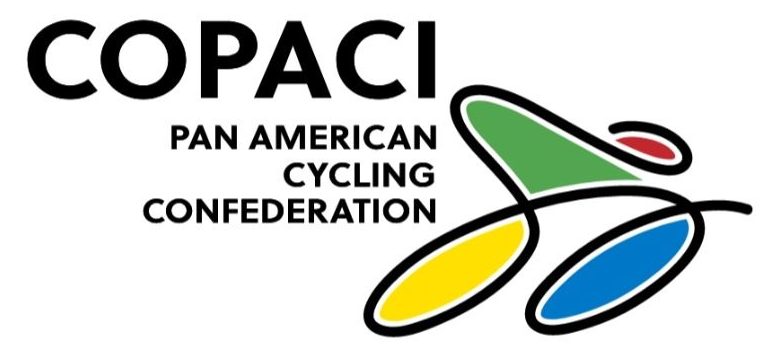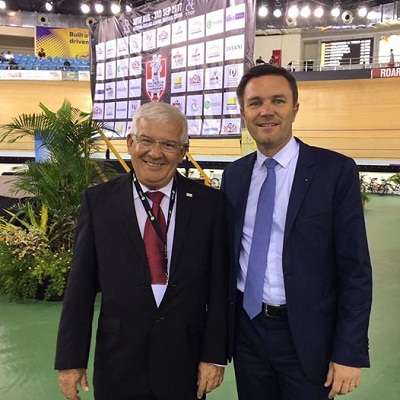Cycling is as rooted in America as football and baseball. It is known that the use of bicycles in this part of the world is growing – not only as a means of transport – but also as an essential tool for physical exercise and individual transport.
José Manuel Peláez
For José “Pepe” Peláez cycling is consubstantial to his life since he devoted himself to this sport. It is endorsed by the half century dedicated to its promotion and development in Cuba; and in the continent, since 1991 when he assumed the presidency of the COPACI, an entity with 44 affiliated national federations and 5 associated federations.
Although the COPACI has not always had sufficient resources to realize its plans and objectives for the future, Pepe Peláez points out that “as in previous years, in 2018 all the Pan-American championships were held in the modalities of track, route, Mountain Bike, BMX and Cyclocross “, which showed a high competitive level, especially the route in the Argentine province of San Juan, which was attended by cyclists from 26 countries.
“The amount of competition in our continent has been growing, particularly in the Caribbean countries,” said Peláez, who acknowledged that “South America has established itself as a very important region for cycling, especially from the work that has done the Argentine Gabriel Curuchet at the head of the South American Union “.
The pretensions of the COPACI in 2018 went beyond the exclusively competitive. The continental cycling entity organized several events to exchange experiences and acquire knowledge, including the UCI Seminar in Panama City, which was attended by representatives of 34 federations to receive up-to-date information on important issues of sport in the world , among them, the battle of the UCI against doping.
It is known that the consumption of prohibited substances is a scourge in the microworld of contemporary sport; but cycling is the one that has most publicly exposed the deceptions, both in the multicolored squad as in other modalities; unlike other sports, which barely expose the transgressions of their athletes and teams.
For Peláez, doping is a problem that hit the American continent greatly in 2018, hence “each federation affected developed a program whose primary objective is educational work with athletes and coaches,” and acknowledged that the controls carried out within and Outside the competitions have reduced the number of positive cases.
“Not infrequently our athletes consume products or vitamin complexes that are not declared as prohibited substances in their forms, but when consumed in large quantities have come to be considered doping,” said the vice president of the Association of Pan American Sports Confederations (ACODEPA) ).
Peláez further reasoned that to obtain good results athletes “have to train well and strong”, and should never consume any substance that is not directed by a specialized doctor. “We must educate them and instill in them that, with good nutrition and good training, excellent results can be achieved without resorting to prohibited substances,” said the experienced cycling leader.
Peláez added that “the fight against doping is a priority issue in the 2022 agenda of the UCI president … The International Cycling Union has invested large amounts of money to combat this scourge with its anti-doping agency,” he warned.
Ladies and gentlemen in massive sprint
Although the dissatisfaction is still evident in the direction of the COPACI, the cycling for ladies in the American continent shows evident signs of growth, like that of the master category.
“Today we have several cyclists from the continent, who have been hired by continental teams and professionals in Europe, but we are not entirely satisfied and we intend to increase this work in 2019 in all national federations, not only preparing new athletes, but also women who in the future they will act as coaches and managers, “he said.
He added that a training course for coaches will soon be organized at the World Cycling Center in Aigle, Switzerland, for which several federations of the continent have shown interest.
Peláez acknowledged that more and more are interested in participating in master Pan-American and other events in this category, such as the GPC RPC in Panama and the Triple 100 in the Dominican Republic. “I could say that this is the modality that has grown the most in recent times,” said the vice president of the UCI.
The resurrection of the Tour of Cuba
If a sporting event fell into the depths of popular taste since it emerged in the early sixties, it is the Cycling Tour of Cuba. The turn of the pedal – conceptualized in the eighties as the second most important in America -, was truncated for a decade by the effects of the special period, until it was resumed at the beginning of this century. However, after the 2010 edition the Vuelta returned to leave the national calendar until our days.
Pepe Peláez is also vice-president of the Cuban Olympic Committee and president of his bicycle federation, so it is obvious that this question will not be absent from office: when will the Cycling Tour of Cuba reappear in the country’s calendar?
Without thinking much and aware of the pressure for the multicolored squad to return for its privileges, Peláez said that “it is working seriously to rescue the Vuelta a Cuba, a highly complex event, not only because of all the logistics involved, but also because the demands of the UCI. ”
He recalled that the Vuelta a Cuba came to have the Exceptional category of the UCI, in which teams of thirteen and fourteen countries competed with exceptional riders of world cycling, coming mainly from the then Soviet Union and Eastern Europe.
“We hope that the Vuelta will return to our roads very soon, we can assure that when that decision is finally made, teams from 5 to 10 countries will be back with us,” said Peláez.
To the question of if there will be a return to Cuba in 2019, Pepe Peláez did not think much to answer, without hiding the optimism, but with evident caution: “until now we are working for the circuit, although we do not rule out the possibility that we can solve the pending issues and we can announce that there will be Vuelta in 2019. But if not, it would be done in 2020. ”
She added that in the national context women continue to be at the forefront of road cycling, and she gave Arlenis Sierra, captain of the Astana Women Team, and Marlies Mejías, among the ten best athletes of 2018 in the country.
Cycling as a 21st century sport
The 2022 Agenda of the International Cycling Union specifies that “tomorrow’s cycling is built today”, a road map structured in five thematic axes, which became the most serious projection of the UCI in recent years.
Peláez believes that the 2022 Agenda clearly defines where work should be directed by the 194 national federations affiliated with the International Cycling Union. “The UCI’s attention to the national federations is drawn with great force on the Agenda, based on its solidarity program.Cycling is a very popular sport and it is practiced in many countries of the world, which is why it is one of the most of the Olympic program, “he said.
For the president of the UCI, David Lappartient, the restitution of the leading role to the 194 national federations and to the 5 affiliated continental confederations, will help that cycling becomes the sport of the 21st century.
For its part, in the Americas the president of the COPACI thinks that “cycling is a sport that has been growing”, a criterion supported by the five modalities present in the Olympic program after the entry of the BMX Free Styler, which also will be present at the Pan American Games in Lima 2019.
According to Pepe Peláez, one of the purposes of the COPACI in the Americas is aimed at increasing track competitions, so that “they lead to a greater participation of the countries of the continent, who in turn will obtain a greater number of points for the UCI ranking. of the cups and world championships. ”
He stated, on the other hand, that it gives him “great satisfaction to speak of the unity that currently exists among all the national federations, and his excellent working links with COPACI and the UCI.” We will continue in 2019 with this work, in the common purpose to further increase the competitive level of cycling in our continent. ”
Finally, the vice president of the International Cycling Union sent “a big hug to all the national federations of the continent, to the athletes, who have performed so well in 2018, and to all those who in one way or another have had to see with the development of cycling in America”.

